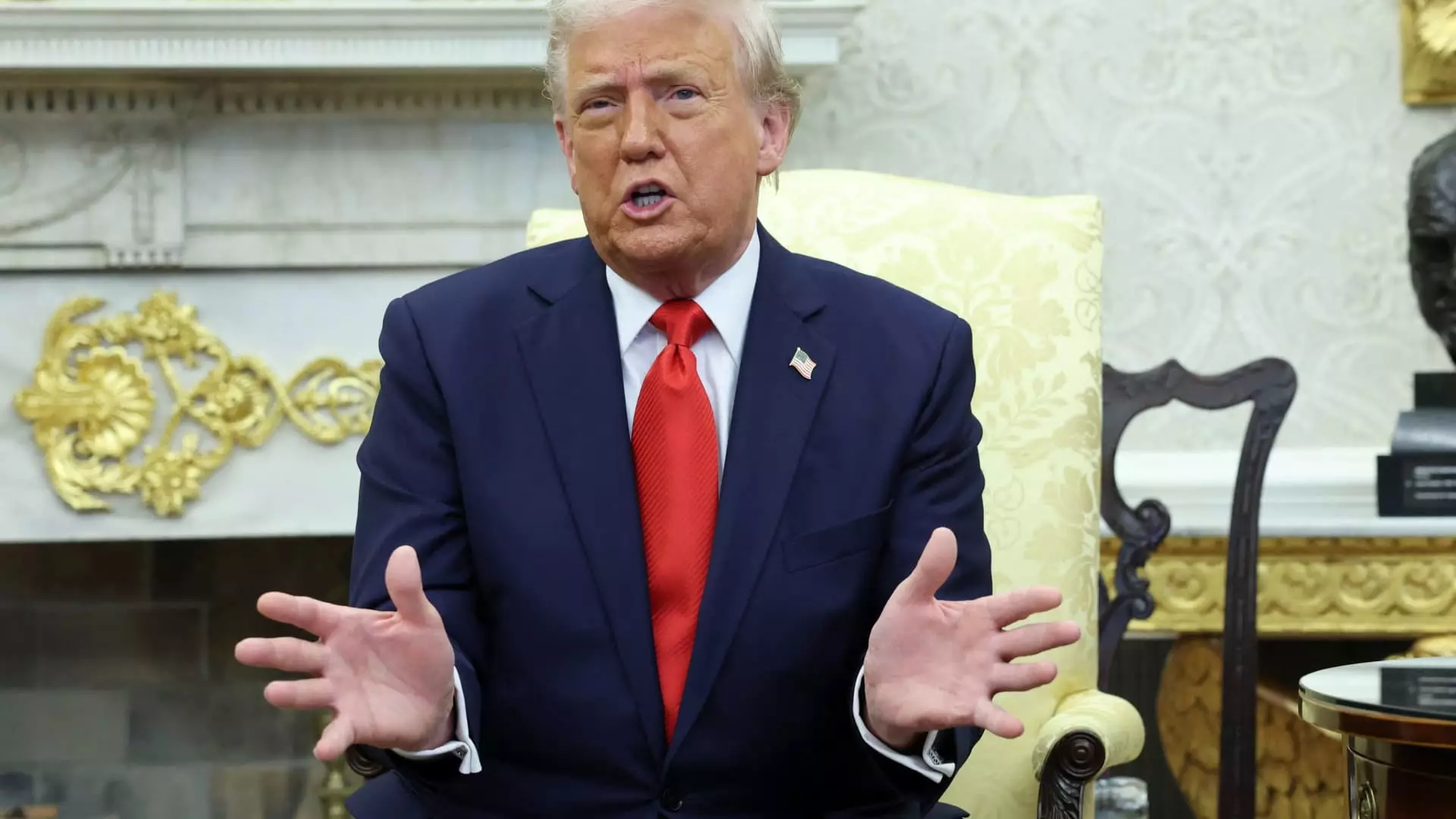In an astounding twist that deviates from the conventional expectations of a booming Wall Street, this year’s first quarter brought unprecedented trading revenue for major U.S. banks. Goldman Sachs, Morgan Stanley, JPMorgan Chase, and Bank of America reported stunning records in their equities trading operations. Collectively, the six largest U.S. banks reaped a staggering $16.3 billion from stock trading during this period, reflecting a 33% increase compared to the previous year. This surge can be attributed to the chaotic landscape stirred by the early decisions made during President Trump’s tenure, which compelled institutional investors to recalibrate their strategies and adapt to a new economic environment.
The significant spike in trading activities underlines a crucial reality: Wall Street is no longer strictly reliant on the traditional avenues of investment banking, such as high-profile IPOs and mergers. Instead, trading floors have emerged as the central centers of profit generation for these banks, indicating a shift in market responses to persistent economic uncertainties. The figures speak to the unexpected resilience of some sectors within the financial industry, representing an essential lifeline amid broader market fluctuations.
The Resilience of Equities Trading Amid Economic Uncertainty
Equities trading desks have emerged as unsung heroes in an otherwise tumultuous financial setting marked by trepidation and risk. As analysts have dubbed the performance of these desks as “spectacular” and “extraordinary,” it paints a vivid picture of an industry thriving on volatility. The influx of trading revenue is primarily a consequence of traders seeking to seize opportunities amidst the posturing surrounding economic policies, tariffs, and trade agreements.
As the anticipated Trump-era boom failed to materialize in the realm of investment banking—marked by stagnant deal activity—the equilibrium began shifting in favor of traders. This dynamic represents a distinctive financial environment where opportunities are driven not by stable conditions, but through rapid shifts, forced maneuvering, and strategic repositioning based on market conditions.
Consumer Confidence and Future Projections
Despite a record-breaking performance in the first quarter, there remains a palpable sense of caution within the financial industry. Wall Street banks are hard at work bracing themselves for potential economic downturns, particularly as they set aside billions for expected soured loans amidst a weakening economy. For instance, JPMorgan’s projections of a rise in U.S. unemployment to 5.8% later this year signal apprehensive anticipation of potential challenges.
While the oscillating nature of equity markets and trading activity represents a boon for investment firms, the concern remains regarding broader economic repercussions if the political landscape continues to foster uncertainty. The potential strain on regional banks, which lack the trading resources of their larger counterparts, poses risks that could reverberate across the financial sector. Here, we witness how the intricacies of high-stakes trading affect the overall health of the economy—a concept often lost in discussions glorifying trading desks.
The Dual Nature of Trump’s Policies: Opportunity vs. Instability
As the ramifications of Trump’s economic policies unfold, the mixed signals—such as protectionist tariffs and erratic trade negotiations—have opened opportunities for professional investors looking to make swift moves. The turbulence initiated by his administration stirs both potential gains and risks, turning the stock market into an unpredictable terrain. Historically, moments of volatility have bred active market participation, and this latest political scenario has been no different.
The constant balancing act of adjusting to fluctuating political dynamics has forced banks and institutional investors into a reactive position, where agility and speed are paramount. In this landscape, successes are often celebrated, yet the underlying fears of financial fragility remain a specter haunting the industry.
The Evolution of Wall Street: Prudence in Trading
In the wake of the 2008 financial crisis, Wall Street underwent seismic shifts, consolidating power and influence within fewer, larger banks. The adaptation to a world where rapid trading, quick decision-making, and client-focused service triumphed over the conventional investment banking norms has redefined how these institutions operate. This evolution has led to an expanded reliance on facilitating trades and providing leverage rather than mere speculative practices.
Leaders like Morgan Stanley’s CEO Ted Pick reflect a new ethos in banking that emphasizes client engagement and direct responsiveness to market movements. This strategic pivot towards accommodating investor demands rather than purely transactional interactions speaks volumes about the new standard set for financial institutions operating in a complex and often unpredictable market.
As Wall Street propels into a potentially profitable second quarter, the multi-faceted implications of these shifts highlight a critical juncture in the American finance landscape—a convergence of chaos and opportunity that defines this unique era. The narrative surrounding trading desks offers a powerful lens into understanding how adaptability, foresight, and strategic engagement define the modern banking experience, elevating the importance of dynamic responses in a world rife with uncertainties.

